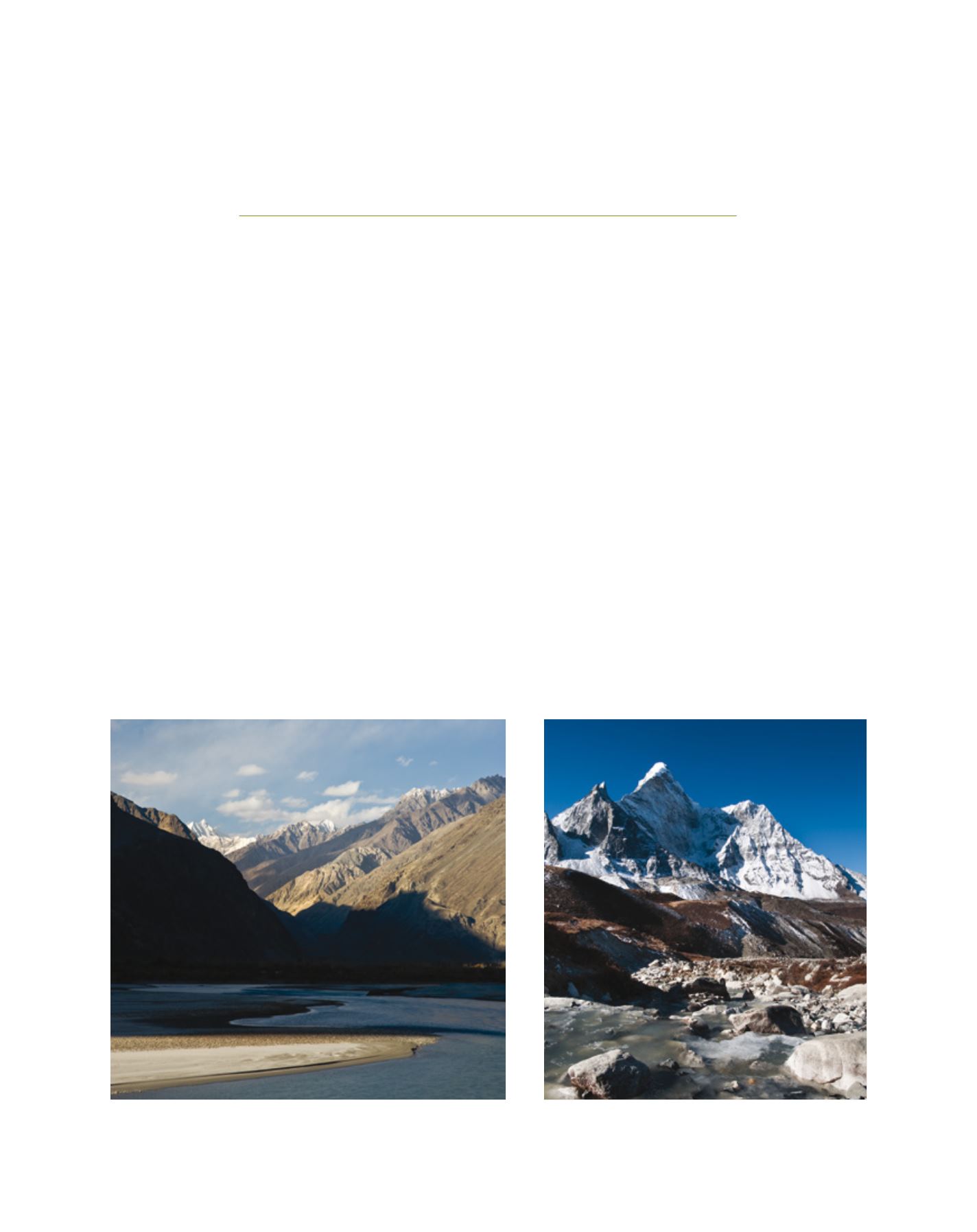

[
] 65
Regional water cooperation in the
Hindu Kush Himalayan region
Arun B. Shrestha, Shahriar M. Wahid, Ramesh A. Vaidya, Mandira S. Shrestha and David J. Molden,
International Centre for Integrated Mountain Development
T
he Hindu Kush Himalayan (HKH) region is a vast complex
of high mountains, intermontane valleys and plateaus;
it contains some of the world’s tallest peaks with over
60,000 km
2
of glaciers and about 760,000 km
2
of snow cover.
This snow and ice represents a massive store of freshwater
which supports food production, domestic water supply and
sanitation, health, energy, tourism, industry, and the func-
tioning of ecosystems. The region’s 10 major river basins – the
Amu Darya, Brahmaputra, Ganges, Indus, Irrawaddy, Mekong,
Salween, Tarim, Yangtze and Yellow – connect upstream and
downstream areas in terms of culture, communication, trade,
commerce and resource management and, directly or indirectly,
provide goods and services to 1.3 billion people including the
210 million that live in the HKH region.
While the river basins have been sources of great civilizations and
routes of sociocultural movement, water-related transboundary coop-
eration in the modern era has been inadequate compared with many
large river basins around the world such as the Danube, Mekong,
Murray Darling, Nile and Rhine. Fortunately the govern-
ments of the HKH region increasingly recognize that
sustainable development of the economic potential of
the river systems – for domestic use, fisheries, hydro-
power, navigation and irrigation – can reduce poverty,
improve livelihoods, conserve ecosystems and contribute
to drought and flood management in the region.
Responding to the challenges of contemporary water
management in the region will depend on regional water
cooperation as an important mechanism to support
informed decision-making. It will require a holistic
understanding and appreciation of the services provided
by water at the local, regional and global scales. It will also
require understanding of the changing water dynamics and
threats to water resource endowments in the HKH region,
particularly in light of the impacts of climate change.
The nature of the hydrological regime determines water
availability and quality, which are variable and continu-
ously changing in time and space. In the HKH region
T
ransboundary
W
ater
M
anagement
Khapalu Valley, Pakistan: the HKH region is a vast complex of mountains,
valleys and plateaus
Khumbu, Nepal: snow and ice represents a massive store of
freshwater for the HKH region
Image: Alex Treadway
Image: Alex Treadway


















